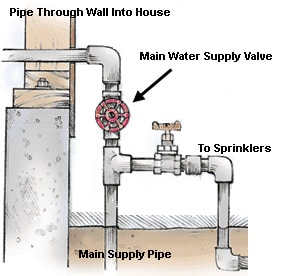Most people do not know where there main shut off valve is at there home. Hopefully this will help you locate the main shut off valve.
Main shut off valves allows water to come into your home when open and when closed will shut water down water to the entire house. Water main shut off can be inside or on the perimeter of your of your house. Reason being that is where water first enter your home. Always the side facing the street. Water lines run from water main to the shut off valve.
One thing to remember is if your in a basement you will be looking eye level or up if you are on the ground level you will be looking down. In the basement you will look towards the from of the house. From the utility box in front of your home stand on top of the utility box and walk the shortest path in a straight line to your house your shut off valve should be in that area, if it is not visible it will be behind a panel.
Sometimes the shut off valve will be located near the water heater or in the garage. If you still are unable to locate the shut off valve, check your home owner property papers it should show the location of the shut off valve.
assuming you still can't locate the shut off valve. Call the water company they may want you to turn the water off in the utility box in front of your house near the street.
There are two valves in that box the valve on the house side will be the one you want to shut off. Never touch the valve on the street side.

Call Smart Plumbers and Rooters at 408 247-2400 and schedule a appointment for all your plumbing needs.

Comments
Post a Comment